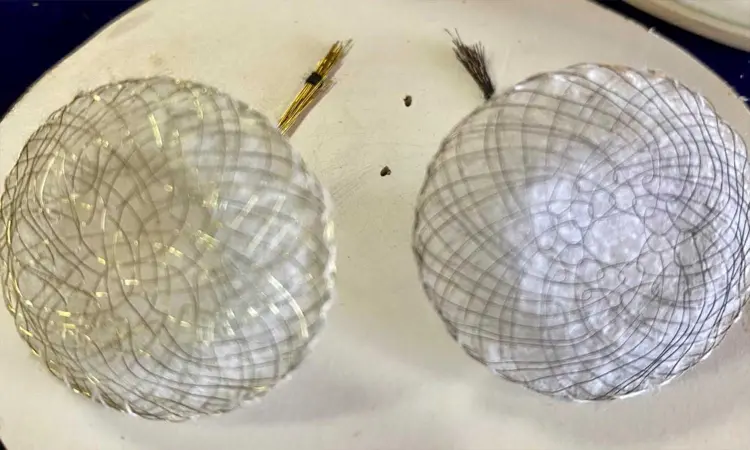- Home
- Medical news & Guidelines
- Anesthesiology
- Cardiology and CTVS
- Critical Care
- Dentistry
- Dermatology
- Diabetes and Endocrinology
- ENT
- Gastroenterology
- Medicine
- Nephrology
- Neurology
- Obstretics-Gynaecology
- Oncology
- Ophthalmology
- Orthopaedics
- Pediatrics-Neonatology
- Psychiatry
- Pulmonology
- Radiology
- Surgery
- Urology
- Laboratory Medicine
- Diet
- Nursing
- Paramedical
- Physiotherapy
- Health news
- Fact Check
- Bone Health Fact Check
- Brain Health Fact Check
- Cancer Related Fact Check
- Child Care Fact Check
- Dental and oral health fact check
- Diabetes and metabolic health fact check
- Diet and Nutrition Fact Check
- Eye and ENT Care Fact Check
- Fitness fact check
- Gut health fact check
- Heart health fact check
- Kidney health fact check
- Medical education fact check
- Men's health fact check
- Respiratory fact check
- Skin and hair care fact check
- Vaccine and Immunization fact check
- Women's health fact check
- AYUSH
- State News
- Andaman and Nicobar Islands
- Andhra Pradesh
- Arunachal Pradesh
- Assam
- Bihar
- Chandigarh
- Chattisgarh
- Dadra and Nagar Haveli
- Daman and Diu
- Delhi
- Goa
- Gujarat
- Haryana
- Himachal Pradesh
- Jammu & Kashmir
- Jharkhand
- Karnataka
- Kerala
- Ladakh
- Lakshadweep
- Madhya Pradesh
- Maharashtra
- Manipur
- Meghalaya
- Mizoram
- Nagaland
- Odisha
- Puducherry
- Punjab
- Rajasthan
- Sikkim
- Tamil Nadu
- Telangana
- Tripura
- Uttar Pradesh
- Uttrakhand
- West Bengal
- Medical Education
- Industry
SCTIMST develops Nitinol-based Occlusion device for Non-surgical closure of Artial Septal Defect

THIRUVANANTHAPURAM:Sree Chitra Thirunal Institute of Medical Science and Technology (SCTIMST) , Institution of National Importance under the Department of Science and Technology, Govt. of India, developed Nitinol based Occlusion device for Non-surgical closure of Artial Septal Defect (ASD).
The device was developed by the Technical Research Centre for Biomedical Devices functioning under the Biotechnology Department at Sree Chitra. Application have been submitted for getting the Indian patent for the device.
The general structure of an ASD occlusion device consists of a braided two lobed structure; the number of wires are braided together and shaped to form the device, the free ends of the wires are held together both sides of the device Device migration and atrial roof erosion are two major issues that are reported with currently used ASD devices. The devise developed by Sree Chitra is aimed to mitigate these common issues and risks
Read Also: SCTIMST Develops Affordable Aortic Stent Graft and its Delivery System
The device has been designed with no hub on the left side of the device; this ensures a smooth tissue layer formation over the device in-due course of time after implantation in the left atrium. The hub on the right side has been retained as part of the release mechanism while delivering the device.
Atrial Septal Defect or in common language a hole in the heart is the most common type of heart disorders that occur congenitally. In this particular case the hole is on the wall separating the upper chambers of the heart, i.e., the left and right atria. The defect occurs during the development of the heart chambers when the growth of the wall (septum) separating the left and right atria might become incomplete causing the formation of defects like ASD and PFO; but there's often no clear cause. Genetics and environmental factors might play a role. Small defects have a probability of getting closed without any intervention during infancy or early childhood.
Presently the demand for the device is met chiefly by imports with one domestic manufacturer. Also the current price of the device is around Rs 60000/- which is expected to be reduced with the Chitra ASD occluder.
The project team includes. Sujesh Sreedharan, Engineer-F, Division of Artificial Internal Organs, Biomedical Technology Wing, SCTIMST, Dr. Bijulal S., Professor, Cardiology, SCTIMST, Dr. Krishnamoorthy K.M., Professor, Cardiology, SCTIMST, Muraleedharan CV, Associate Head, BMT Wing, SCTIMST, Ramesh Babu, Engineer-G, Precision Fabrication, Dr. Ramesh P, Scientist-G, Polymeric Medical Devices, Jijo Jerard, Senior Project Engineer, Amritha TS, Project Assistant, Liji G.V., Project Assistant,. Rajeev A, Sr. Scientific Assistant and Subhash Kumar MS, Technical Assistant.
Read Also: TAVR and SAVR have similar mortality and Stroke risk in AS: NEJM
Medical Dialogues Bureau consists of a team of passionate medical/scientific writers, led by doctors and healthcare researchers. Our team efforts to bring you updated and timely news about the important happenings of the medical and healthcare sector. Our editorial team can be reached at editorial@medicaldialogues.in.


